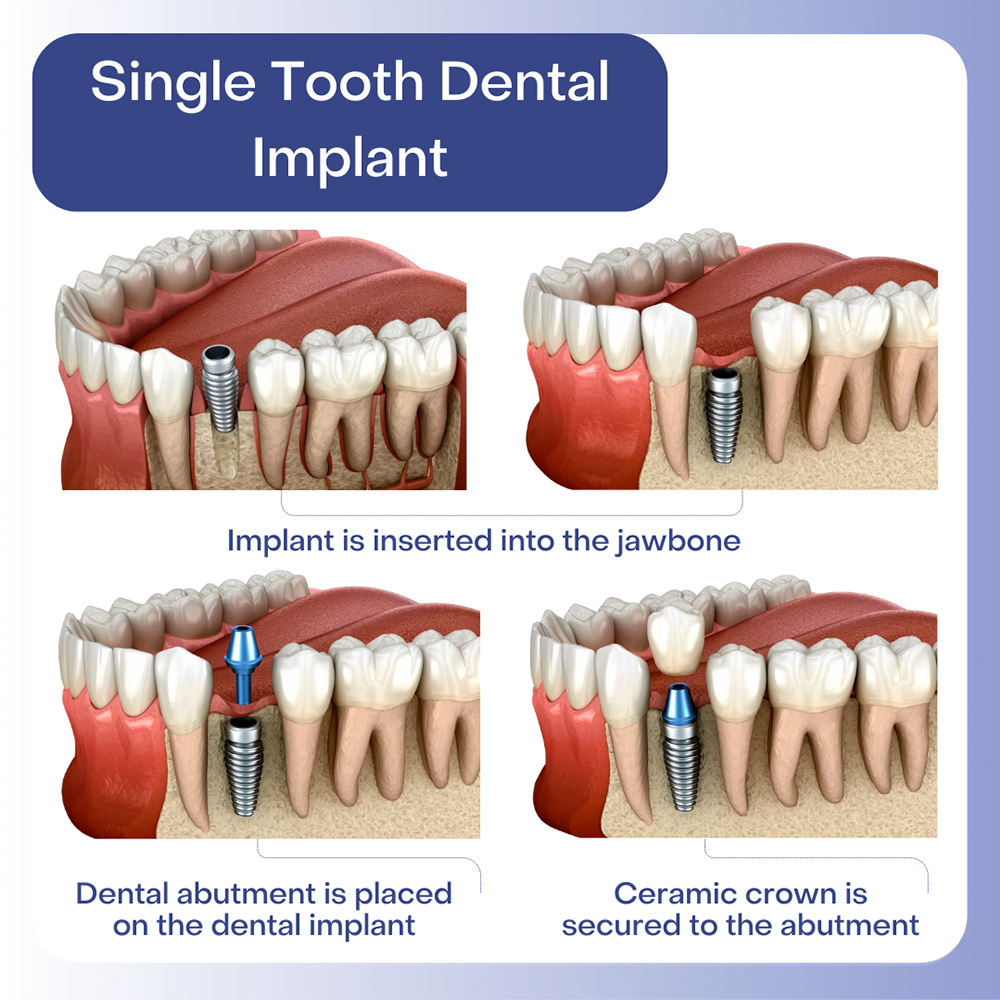Some Known Details About Dental Sense
Some Known Details About Dental Sense
Blog Article
About Dental Sense
Table of ContentsIndicators on Dental Sense You Should KnowThe Main Principles Of Dental Sense 9 Simple Techniques For Dental SenseThe Main Principles Of Dental Sense
are medical devices surgically dental implanted right into the jaw to recover an individual's ability to chew or their look. They offer assistance for synthetic (phony) teeth, such as crowns, bridges, or dentures. When a tooth is shed due to injury or disease, a person can experience issues such as rapid bone loss, malfunctioning speech, or adjustments to chewing patterns that cause pain.Oral dental implant systems include a dental implant body and dental implant abutment and might also consist of a joint addiction screw. Cosmetic dentistry services. The oral implant body is operatively placed in the jawbone in area of the tooth's origin. The dental implant abutment is generally affixed to the implant body by the joint addiction screw and expands with gums into the mouth to sustain the attached fabricated teeth
(https://dentalsense1.wordpress.com/2025/01/11/dental-implants-root-canal-procedures-professional-teeth-whitening/)Framework of The Dental Implant System choosing dental implants, talk with your oral provider about the possible advantages and threats, and whether you are a prospect for the procedure. Points to consider: Your overall health and wellness is an important consider figuring out whether you are a great candidate for oral implants, how long it will take to heal, and how much time the implant may remain in location.
Smoking cigarettes might affect the healing process and lower the long-lasting success of the dental implant. The recovery procedure for the implant body may take numerous months or longer, during which time you commonly have a momentary joint instead of the tooth. the dental implant procedure: Carefully follow the dental health guidelines given to you by your dental service provider.
A Biased View of Dental Sense
Implant failure can result in the demand for one more medical treatment to fix or change the implant system. Restores the capacity to chew Brings back aesthetic look Helps keep the jawbone from reducing because of bone loss Protects the health and wellness of the surrounding bone and periodontals Helps maintain surrounding (close-by) teeth steady Boosts high quality of life Damage to bordering all-natural teeth throughout implant positioning Injury to the surrounding tissues throughout surgical procedure, such as sinus perforation Injury throughout surgical treatment (for instance, fracture of surrounding jawbone) Inadequate function, such as seeming like the teeth do not bite together normally A sensation that the tooth hangs or twisting in location arising from an abutment screw loosening up Implant body failure (looseness of the dental implant body) because of systemic infection, which may be more probable in clients with uncontrolled diabetes because of neighborhood infection in bone and periodontals supporting the dental implant body as a result of postponed recovery, which might be a lot more likely in individuals that smoke Difficulty cleaning up the gum tissues around the implant, resulting in bad oral hygiene Neglected gum condition Post-surgical tingling because of nerve impingement or damages Always inform health and wellness treatment suppliers and imaging specialists that you have oral implants before any type of magnetic resonance imaging (MRI) or x-ray procedures.
FDA is not aware of any type of negative occasions reported for MRI or x-ray procedures with oral implants. Dental implants systems are typically made from products that adhere to global agreement requirements of the International Organization for Standardization (ISO) or ASTM International. These standards have information of what makes a secure product.

An oral implant is a structure that changes a missing out on tooth. With screw-like devices, the cosmetic surgeon inserts a dental implant into the jawbone, and it serves as a support for a synthetic tooth, called a crown. A tool called a joint attaches the artificial tooth to the oral implant. The crown is customized to fit the individual's mouth and match the color of their teeth.
Getting The Dental Sense To Work
Some individuals are not qualified for dental implant surgical procedure. It is for dental specialists to operate people with: intense illnessuncontrollable metabolic diseasebone or soft tissue condition or infectionIf these issues are settled, a person can have the surgery. In, dental surgeons avoid from operating people with: If individuals with any of the above undergo oral implant surgical treatment, there is a higher risk of the dental implant stopping working.

Dental implant surgical treatment is an individualized procedure. It's not the very same for every person. However the following provides a basic introduction of what you can expect your dental practitioner, dental surgeon, periodontist or prosthodontist to do: Place the implant surgically. Give you time to recover. Connect the blog post and last crown, bridge or denture.
Next off, your cosmetic surgeon will carefully place the dental implant right into your jaw. Ultimately, your surgeon will rearrange your gums and close the laceration with stitches. If your dental implant is near the front of your mouth, your dentist will certainly make a momentary tooth for you to put on until you recover. This way, you won't have a gap in your smile while you recuperate.
The Facts About Dental Sense Uncovered
Your copyright can inform you what to anticipate in your situation. During the recovery phase, your jawbone should fuse to the dental implant. This procedure, called osseointegration, is important for security and long-term success. This process can take anywhere from 3 to 9 months. In some situations, it may take longer.
When your dental implant heals, your dental practitioner can attach the joint (small adapter blog post) and your final reconstruction (crown, bridge or denture). This usually takes about one hour he has a good point to finish and may require a second small surgical treatment. You should not feel any discomfort throughout your dental implant procedure because your service provider will make use of medicine to numb your gum tissues.
Report this page